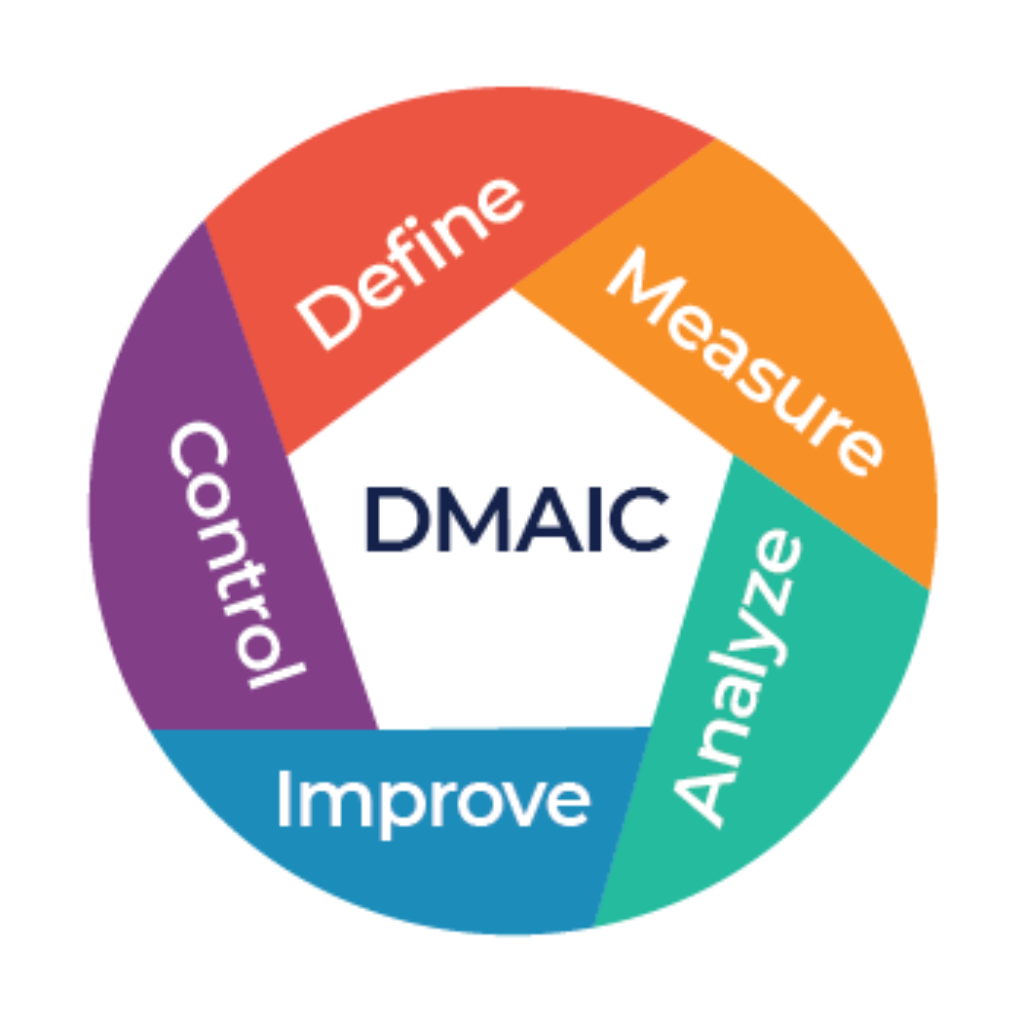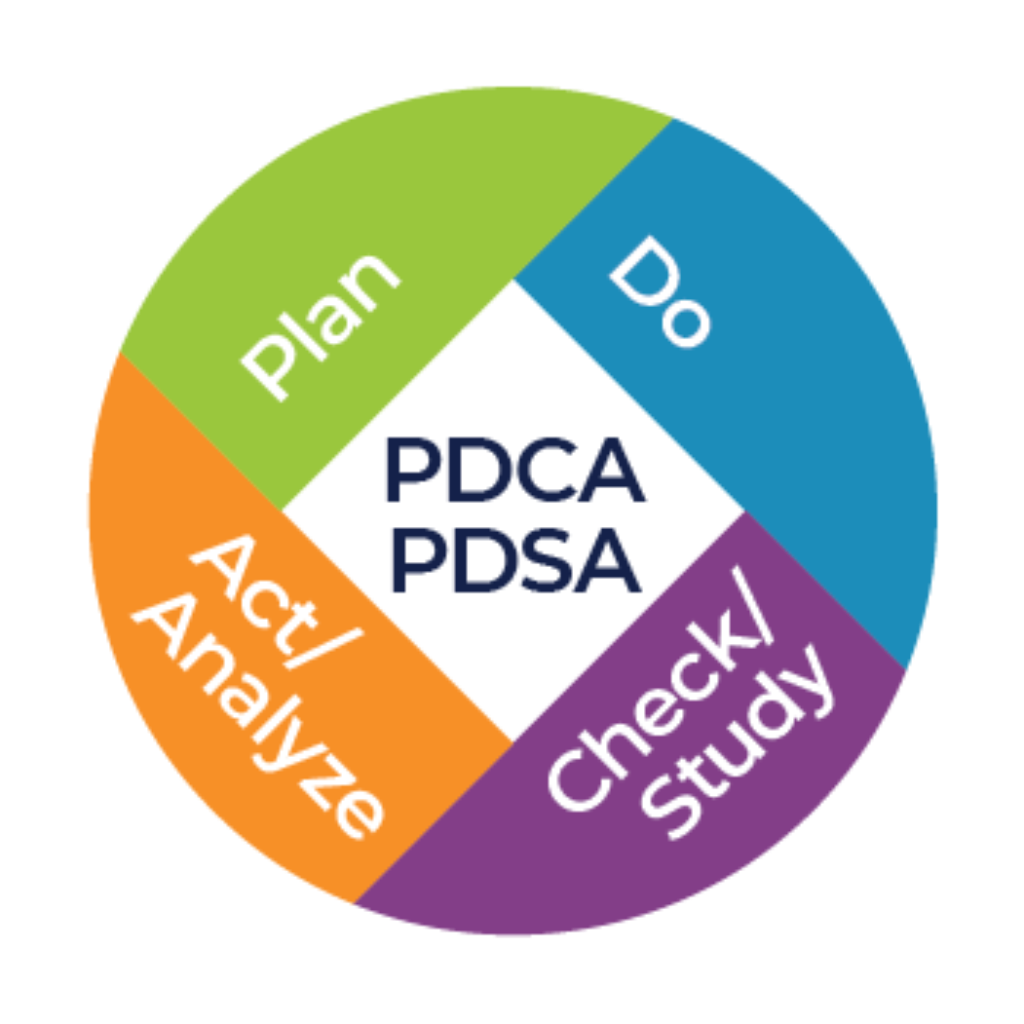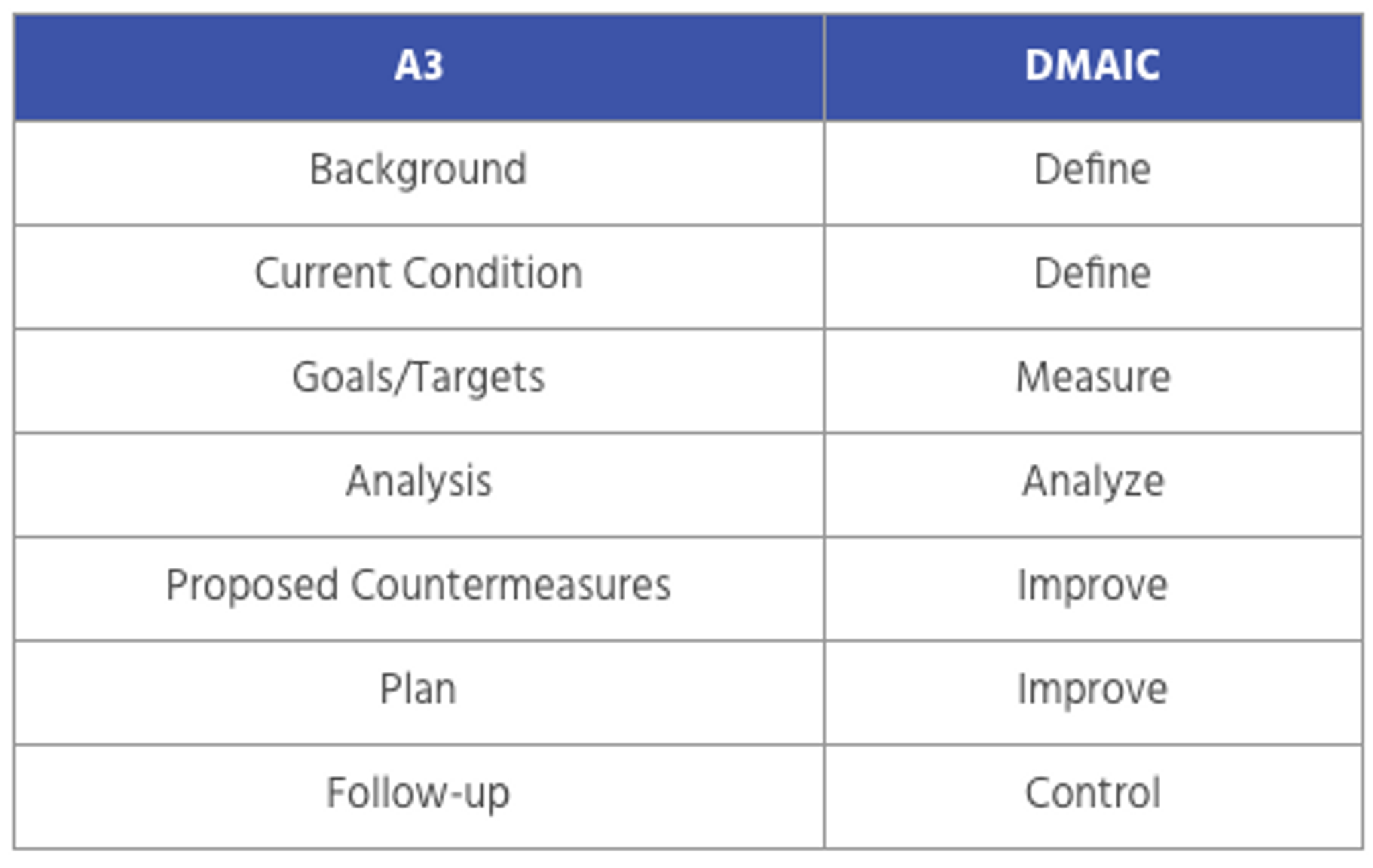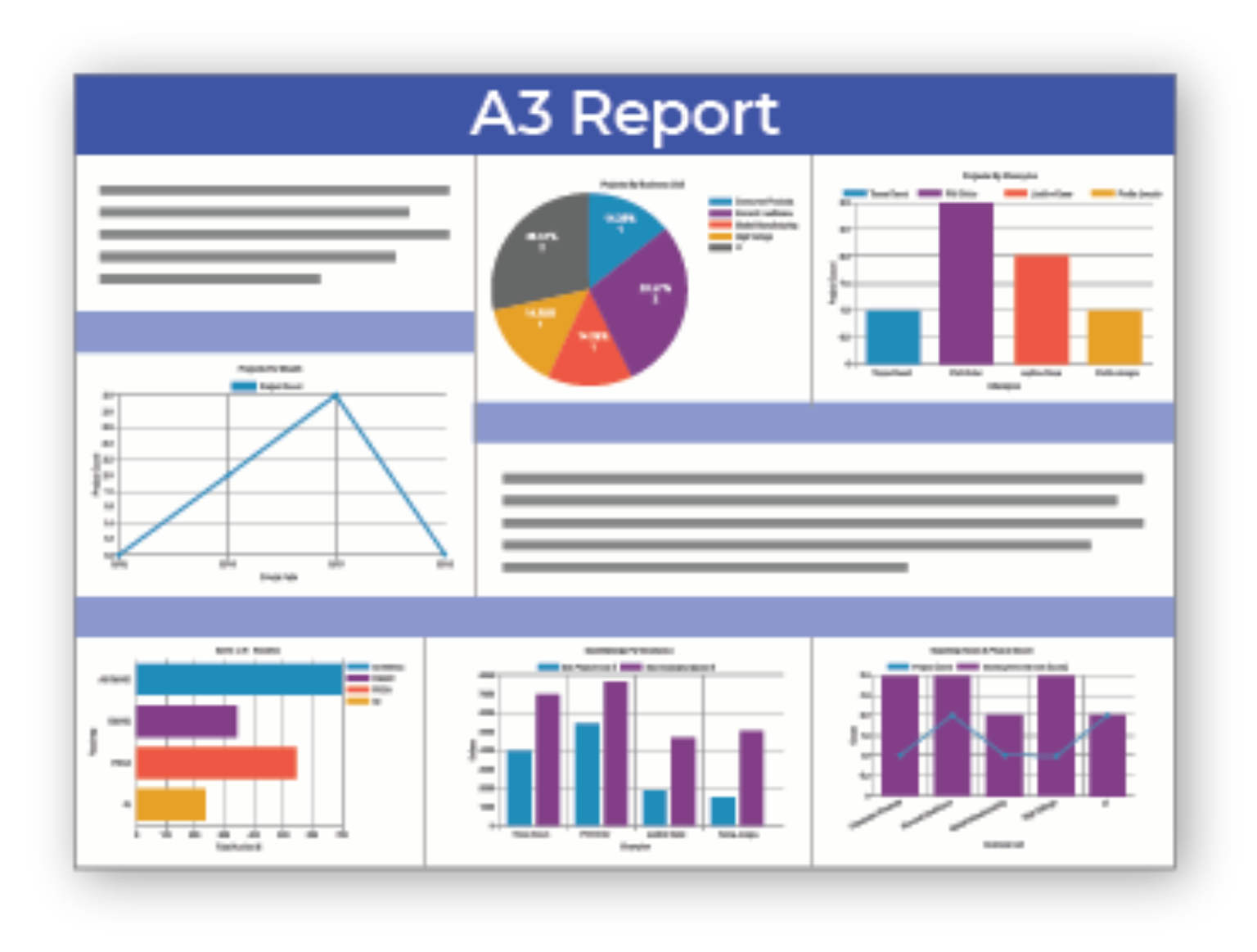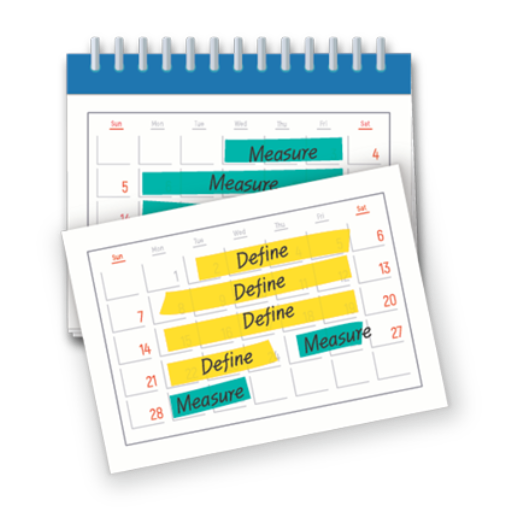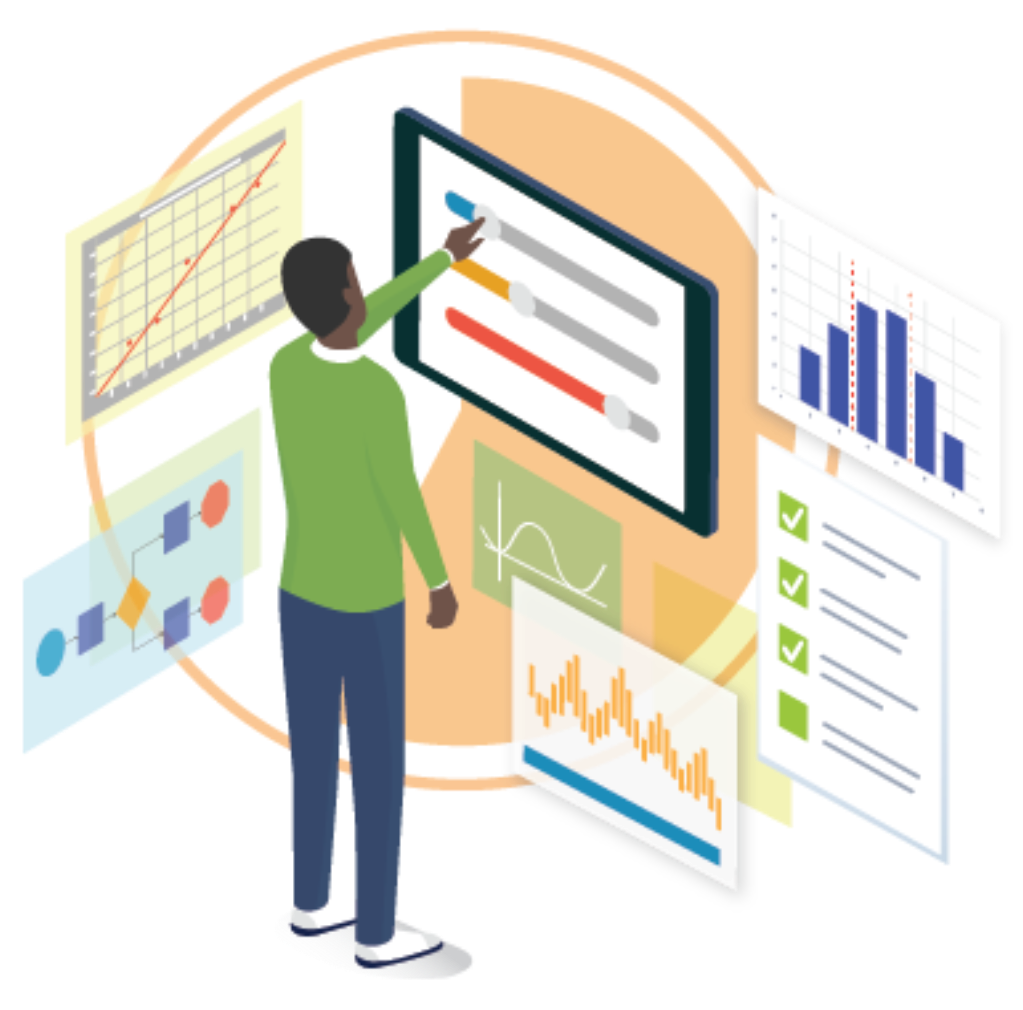
Problem-Solving Roadmaps: Definitions, Examinations, and Common Myths Explained
January 23, 2023There is so much noise surrounding continuous improvement roadmaps and how we should approach them.
- Why are there so many options?
- Which one is the best one to use and when?
- Is one problem-solving roadmap better than another? Why?
- What is the difference between all of them?
It's easy to get caught in the weeds when trying to sort out all the different process improvement roadmaps and how they can support your problem-solving efforts. The debates and opinions arguing over which is best or why one is better than the other are common in the industry, even among experts.
But the truth is, subscribing to these arguments is antiquated and can pigeonhole you into repeating the same approach with all of your future process improvement initiatives. Over time, this strategy may only slow you down.
Continuous Improvement roadmaps are a sequence of ongoing and often iterative steps designed to help identify and correct problems.
All popular roadmaps express the scientific method, which organizes problem-solving work and encourages critical thinking.
There are a lot of strong opinions and arguments over which roadmap is 'superior.' But they are all useful forms of problem-solving, and many of the 'rules' you've heard are likely myths.
Problem-solving roadmaps are crucial tools for continuous improvement. Each one adds value to your projects and can act as a thought exercise and a results-driven mechanism for process improvement projects.
So, What Are Continuous Improvement Roadmaps?
Roadmaps are a defined sequence of steps intended to help identify and correct problems. They share a common intent of organizing the work of critical thinking and problem-solving.
Process improvement is complicated. People need guidance on how to get from here to there, just like taking a road trip. And when we plan our travels, we all know there isn't a singular route that takes you to every destination, but there usually are multiple routes that can take you to the same destination.
There are several process improvement roadmaps, and all are an expression of the scientific method. Some examples include (but are certainly not limited to):
- DMAIC
- PDSA
- PDCA
- 8 Disciplines
- A3 (more of a method than a roadmap, but there is an embedded roadmap)
Some attributes that apply to all roadmaps include:
- They should be an organized sequence of questions grouped into logical steps.
- Technically, they can act as a checklist of tools or deliverables. But any shortcuts fail to recognize that scientific learning follows a Question-Action-Answer process. You must start with the "question" or lose the why.
- They are not magic. What Piet Hein said is very accurate: "Problems worthy of attack prove their worth by fighting back."
- They can all be iterative, with further improvement cycles following a first round of actions.
- They are all equally simple or complex, depending on the problem. Simplicity follows the problem, not the roadmap.
For Easy Access to More Blogs Like This One, Subscribe to Our Newsletter!
Popular Roadmaps Explained
DMAIC
The DMAIC method is a data-driven method of problem-solving that originated with the Six Sigma approach to process improvement. 'DMAIC,' a five-step process, is an acronym for Define, Measure, Analyze, Improve, and Control. It is the fundamental roadmap for all Lean Six Sigma process improvement projects.
The DMAIC process, like most roadmaps, is both a thought exercise and a tool to organize project work. This method is popular among practitioners because it applies to nearly any problem that needs solving as long as measurable data exist.
Since the DMAIC roadmap is often used on more complex projects, those projects may include formal reviews and even sign-offs at each phase. Those "tollgate" reviews are a function of the chosen project management structure, not an inherent characteristic of the roadmap itself. This extra step led to the perception that DMAIC projects take a long time (too long!) to complete. However, organizations can use DMAIC to solve a simple problem in a day or even less.
Historically, DMAIC projects have often been treated incorrectly as a "one-project-that-fixes-everything-forever" effort. But DMAIC's intention is a nonlinear cycle, restarting through iterations of continuous improvement.
PDCA and PDSA
PDCA and PDSA are acronyms for Plan, Do, Check, Act/Adjust and Plan, Do, Study, Act, respectively. They are nearly the same roadmap with slightly different labels and are very similar to the DMAIC process. Also known as the "Deming Cycle," PDCA/PDSA embraces the scientific method, can be iterative, often involves multiple visits to one or more steps, and revolves around continuous improvement rather than developing the 'perfect' plan. W. Edwards Deming popularized PDSA, originally referring to it as the "Shewhart Cycle."
PDCA/PDSA has been embraced by those who employ Lean Methods, Lean, or various derivatives of the Toyota Production System as the overarching process improvement paradigm. A strong emphasis is placed on iterative improvement via continued trips through the cycle.
The PDSA/PDCA cycle consists of four steps:
- Plan: Identify the problem or opportunity you want to address and develop a plan to test a change or solution.
- Do: Implement the change or solution that you have planned.
- Study/Check: Observe and collect data on the effects of the change or solution.
- Act/Adjust: Analyze your collected data and decide whether to continue with the change or solution, modify it, or abandon it.
PDSA/PDCA is a valuable guide for continuous improvement because it allows you to make small, incremental changes and quickly learn from them, rather than trying to implement a significant, complex change all at once.
The critical difference between the DMAIC process and PDCA or PDSA is that you'll spend most of your time in the 'Plan' phase with PDCA/PDSA since there is so much to cover. In fact, many companies divide the thinking and tools used in the Plan phase into P1, P2, and P3 before teaching D, C, and A.
Most everything from the Define, Measure, and Analyze phases of DMAIC happens in the Plan phase of PDCA/PDSA.
When choosing between DMAIC or PDCA, decide whether the Plan phase is too wide of a scope for your project. The DMAIC process is more balanced regarding the distribution of work, with Define, Measure, and Analyze happening before the "doing" or Improve phase.
A3
A3s are more of a "procedure" than a roadmap, but they do have an embedded problem-solving methodology that maps very closely to DMAIC, as shown below.
A3 reports are one-pagers used to guide thinking and document improvement actions. Their use originated at Toyota in a pre-computer era of pencil & paper, with hand-drawn charts and graphs. Traditionally, the space limitation of communicating problem-solving on a single piece of paper reinforces clarity and brevity of expression.
The scientific thinking process that A3s encourage is timeless, but the paper-based approach can limit complex projects involving much data. For example, there isn't even room to display a proper control chart. But for narrowly scoped problems, they can be an accessible and easily communicated method to support problem-solving.
8 Disciplines
8 Disciplines, or 8-D, follow the same logic of scientific thinking embodied in DMAIC and PDCA in an expanded fashion, with more detailed steps to guide problem-solving teams. The emphasis of this roadmap is slightly different. It includes an explicit call to isolate problems from customers and recognize the contributions of those on the problem-solving team (as highlighted below). The 8-D process has been commonly used in the automotive industry and is usually used to address quality problems rather than Lean (flow) issues.
Every organization has its definition of what the eight disciplines represent, but the general meaning of each one is as follows. Note the addition of a 'Plan' step ahead of Step 1. As it turns out, planning is important to problem-solving!
- D0: Plan
- D1: Form your team
- D2: Define and Describe the Problem
- D3: Contain the Problem
- D4: Determine and Verify Root Cause(s)
- D5: Identify and Test Solutions
- D6: Choose Solutions and Put Them Into Practice
- D7: Prevent Recurrence
- D8: Celebrate and Recognize Contributions
For those of you regularly using DMAIC or PDCA/PDSA, or A3s, there are a couple of valuable lessons from the 8-D process:
- While doing the analytical work necessary to uncover and resolve the true root cause of a problem, you can't send defects to customers. Interim measures must be taken to build a fence around your problems, shielding them from the 'works in progress.'
- Process improvement work is hard. It's rarely glamorous. So remember to set some time aside to recognize the contributions of those who helped to solve a problem.
Apply the DMAIC Method to your Processes Before Deploying Them By Trying Out EngineRoom!
Common Roadmap Myths Explained (and Busted)
As great (and necessary) tools as they are, we often get hung up on what we believe are the 'rules' of the roadmaps. Practitioners who have spent a life-long career in continuous improvement still subscribe to common misconceptions surrounding popular problem-solving methods. But many of the 'truths' we hear about these roadmaps are actually myths.
Lean is all about reducing waste, and subscribing to what we believe are the 'hard and fast' rules of these problem-solving roadmaps is simply wasteful.
Roadmap Myth #1 - PDCA is Simpler than DMAIC
"Simplicity" in process improvement follows the problem, not the roadmap. If a problem is solved appropriately, no roadmap is any simpler than another. Every problem-solving method is an expression of the scientific method, and good science doesn't have shortcuts. If the problem is simple, the project will be simple, and if the problem is complex, so will the project.
Roadmap Myth #2 - You Cannot Perform DMAIC in a Day
One of MoreSteam CEO Bill Hathaway's favorite phrases is "the 'M' in DMAIC doesn't stand for 'Months.' DMAIC is simply a framework to organize critical thinking. It can expand and contract to fit the problem that needs solving. So really, there is no reason you can't use the DMAIC process to solve a simpler problem in a matter of hours.
The timing of the problem-solving comes down to how long it takes to answer the critical questions. If some of the answers are already known, problem-solving is accelerated.
For example, if it is a narrowly scoped problem, you already know who the customer is and already have a process specification to work with, then the Define phase will go quicker. If you already have reliable data on the problem, then the Measure phase will go quicker.
Roadmap Myth #3 - DMAIC is a Mandatory Checklist of Tools
The DMAIC methodology should be considered a sequence of questions, not a checklist of tools.
We can often answer the same question by employing several different tools. And sometimes, the answers to specific questions are already known. Using unnecessary tools to solve the problem is a form of excess processing or waste. It's one of the reasons why projects take too long and is also a frequent source of confusion for practitioners.
The whole point is to answer the critical questions using scientific thinking as efficiently as possible, driven by the Question -> Action (Tool) -> Answer sequence. Tools are the bus, but questions are the bus driver.
Roadmap Myth #4 - PDCA is Cyclical, and DMAIC is Not
People often think PDCA is a better roadmap for continuous improvement because it's inherently iterative and cyclical. But DMAIC is the same way. Usually, once you reach the Control phase, you aren't wiping your hands clean. Over time, you'll continue to monitor the project's state to ensure that the processes put in place are still functioning as needed. The DMAIC method is successful when you've established a new baseline of improvement more significant than the original.
It's important to understand that the DMAIC methodology should act as a framework for your projects, not a checklist.
The acronym lays out the order in which you should perform the steps, but this is merely a guideline to help keep track of the status of your project. Depending on the project, you may find yourself going back to previous phases once (or several times) after making new discoveries and reevaluating the scope of your improvement.
It's completely normal (and encouraged) to revisit each phase as often as needed throughout the process.
Roadmap Myth #5 - An A3 is a "Fill in the Blank" Template for Reporting
The only guideline to note regarding an A3 report is its intention. It's a brief report that documents necessary information for progress reporting and decision-making. And what is considered "necessary information" will depend on the project. So, each A3 report is a unique tool, not a generic information template.
A3s are not about the paper or even the report. It's a five-step framework for problem-solving and critically thinking about the problem, root cause, and potential countermeasures.
Although it does have an embedded roadmap, A3 is more unique than other problem-solving methods. It's not a list of specific phases to follow but a way of thinking and analyzing a more narrow-scoped problem.
Roadmap Myth #6 - If You Follow a Roadmap the Same Way Every Time, You'll Always Get a Good Outcome
The Lean Six Sigma roadmaps provide a way to visualize, organize, strategize and communicate the general project improvement process to stakeholders. It's a high-level plan that helps the improvement team state the overarching goal and capture the steps to achieve it.
Rather than a baking recipe, which can be linear and explicitly defined, each roadmap is a general methodology or guide for improvement activities.
It guides the team's direction but is flexible enough to allow for adapting the approach to produce accurate insights. For instance, an analysis (Analyze phase) often indicates the need to gather more data (Measure phase) or include new variables in the search for root cause.
Hence, an iterative approach is necessary to get to the final solution. Knowing when and how to apply tools appropriately is more important than blindly following a 'recipe.'

MoreSteam's Enterprise Process Improvement platform includes the tools, training, and software you need to transform your organization, large or small, into a problem-solving powerhouse. Our products are trusted by over half of the Fortune 500 and by other organizations and universities worldwide. When you partner with MoreSteam you gain a team dedicated to helping you succeed.
